Vijaydurg Fort
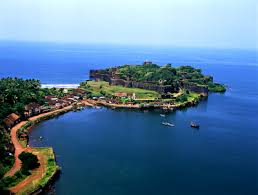
Vijaydurg Fort, one of Maharashtra’s most formidable sea forts, stands as a testament to the strategic brilliance of Chhatrapati Shivaji Maharaj. Built in the 12th century and later fortified by Shivaji, this coastal stronghold played a crucial role in the Maratha Navy’s dominance over the Arabian Sea.
Located in the Sindhudurg district, Vijaydurg Fort is known for its triple-layered walls, deep moat, and secret escape routes. The fort’s unique architecture, including its 200-meter-long underwater wall, showcases advanced military engineering. Once a thriving naval base, it successfully resisted numerous attacks from the British and Portuguese.
Today, Vijaydurg Fort remains a symbol of Maratha resilience and naval supremacy. Visitors can explore its grand bastions, ancient structures, and stunning sea views while reliving the fort’s glorious past. A must-visit for history enthusiasts, Vijaydurg Fort stands as an enduring legacy of Maharashtra’s rich heritage and maritime power.
History of Vijaydurg Fort
Originally constructed in the 12th century by the Shilahar dynasty, Vijaydurg Fort was initially a smaller coastal stronghold meant to safeguard the vital Konkan trade routes and provide protection from seaborne invasions. Situated on the western coast of Maharashtra, the fort occupied a strategic location that allowed rulers to monitor maritime activity and control regional commerce.
However, recognizing its immense strategic significance, Chhatrapati Shivaji Maharaj captured Vijaydurg Fort in 1653 as part of his ambitious plan to strengthen the Maratha naval presence along the Arabian Sea. Understanding the fort’s defensive potential, Shivaji undertook a series of extensive modifications to transform Vijaydurg into one of the most fortified naval bases of the Maratha Empire.
Shivaji Maharaj’s Vision and Fortifications
Under Chhatrapati Shivaji Maharaj’s rule, Vijaydurg Fort underwent extensive expansion and reinforcement, transforming it into one of the most formidable maritime forts in India. Recognizing the strategic importance of the Konkan coast, Shivaji fortified the fort to withstand both land and sea attacks, ensuring its defensive superiority against foreign invaders and rival kingdoms. His vision for Vijaydurg was not just as a defensive structure but as a stronghold of Maratha naval power.
Major Fortifications Introduced by Shivaji Maharaj
Shivaji’s enhancements to Vijaydurg Fort included:
- Triple-layered fortification walls: Built using laterite stone, these massive walls made the fort nearly impenetrable. The multi-layered defense system ensured that even if an enemy breached the outer wall, they would face additional barriers before reaching the core of the fort.
- Massive bastions and watchtowers: Strategically positioned along the fort’s periphery, these bastions provided unparalleled visibility over the Arabian Sea and surrounding areas, allowing Maratha soldiers to monitor enemy movements from miles away. The bastions were also equipped with cannon emplacements, enabling long-range artillery attacks on approaching enemy ships.
- Secret underground escape routes: Shivaji Maharaj, known for his strategic genius, incorporated hidden tunnels within the fort, providing defenders with a safe escape route during prolonged sieges or surprise attacks. Some of these tunnels are believed to have connected the fort to nearby locations, allowing for quick reinforcements or evacuations.
- 200-meter-long underwater stone wall: One of Vijaydurg’s most astonishing engineering marvels, this submerged structure was designed to obstruct enemy ships from approaching the fort. Built with large laterite blocks, the underwater wall was an effective naval defense mechanism, capable of damaging enemy vessels trying to infiltrate Maratha-controlled waters.
- Naval dockyard (Kallal Bhandi): Unlike most forts, Vijaydurg housed a fully functional shipbuilding and repair dockyard. This facility enabled the Marathas to construct, maintain, and repair their warships, ensuring that their naval fleet remained strong and battle-ready. This dockyard played a crucial role in the rise of the Maratha Navy, allowing them to challenge European maritime supremacy in the Indian Ocean.
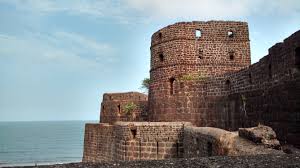
A Symbol of Maratha Naval Supremacy
Due to these groundbreaking fortifications and naval advancements, Vijaydurg Fort became a symbol of Maratha resilience, ingenuity, and naval supremacy. The fort successfully resisted multiple attacks from Portuguese, Dutch, British, and Siddis over the years. Even the well-equipped and powerful British East India Company struggled to breach Vijaydurg’s defenses until 1818, when it finally fell after an extended siege.
Shivaji Maharaj’s vision for Vijaydurg as a maritime stronghold not only safeguarded the Konkan coastline but also established the Maratha Navy as a dominant force in the Indian Ocean. Today, the fort’s towering walls, secret tunnels, and underwater defenses stand as a testament to his brilliance in military strategy and fort architecture. Vijaydurg remains a monument of Maratha maritime excellence, drawing history enthusiasts and travelers eager to explore its legendary past.
Kanhoji Angre and the Maratha Navy
Vijaydurg Fort reached its peak importance during the reign of Kanhoji Angre, the legendary Admiral of the Maratha Navy. A naval genius and a fearless warrior, Angre transformed Vijaydurg into the headquarters of the Maratha naval fleet, using it as a base to launch successful attacks against European colonial powers, including the Portuguese, Dutch, and British. His strategic vision and superior naval tactics ensured that Vijaydurg remained an unconquered maritime fortress for decades.
Kanhoji Angre’s Achievements and Naval Dominance
Under Angre’s leadership, Vijaydurg Fort became the center of Maratha naval supremacy in the Arabian Sea:
- Dominance Over the Arabian Sea: Angre’s navy effectively disrupted European trade and military movements, challenging the established supremacy of the British East India Company, Portuguese, and Dutch forces. He imposed a tax on all ships passing through Maratha-controlled waters, strengthening the economy of the Konkan region.
- Advanced Warship Construction: Vijaydurg Fort evolved into a major shipbuilding hub, producing sophisticated warships like Gurabs and Gallivats. These fast, maneuverable vessels outmatched European ships, allowing the Marathas to conduct swift raids and surprise attacks on enemy fleets.
- Strategic Trade Center: The fort also functioned as an important commercial hub, controlling the flow of goods and trade along the Konkan coast. Merchants and traders relied on Maratha protection, further increasing Vijaydurg’s economic and strategic significance.
- Unmatched Naval Warfare Tactics: Angre’s fleet defeated multiple British and Portuguese armadas, forcing them to negotiate treaties and pay tributes to safely pass through Maratha waters. His guerrilla-style naval warfare, utilizing the coastal geography, shallow waters, and hidden inlets, gave the Marathas a tactical advantage over the bulkier European warships.
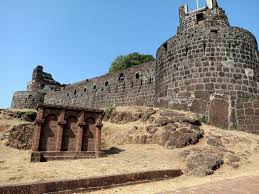
Unsuccessful European Attempts to Capture Vijaydurg
Despite numerous attempts to overthrow Kanhoji Angre, European colonial powers failed to capture Vijaydurg due to its formidable defenses and Angre’s naval expertise:
- 1718: The British East India Company launched an unsuccessful assault on Vijaydurg, underestimating the strength of Angre’s navy.
- 1721: The Portuguese and British forces formed a coalition and attempted to breach the fort’s defenses, but Angre repelled their attack with superior maritime strategy.
- 1729: A combined attack by the British and Portuguese resulted in a fierce battle. Despite their powerful fleet and artillery, they failed to conquer Vijaydurg due to its impenetrable walls, strong naval presence, and the well-trained Maratha forces stationed at the fort.
Kanhoji Angre’s unwavering control over Vijaydurg earned him the title “Shivaji of the Indian Ocean”. His death in 1729 marked the beginning of European colonial powers intensifying their efforts to weaken Maratha naval dominance, but his legacy continued to inspire generations of Maratha naval commanders.
Legacy of Kanhoji Angre
Even after his passing, Vijaydurg Fort remained a key maritime base for the Marathas. His naval innovations and strategic brilliance laid the foundation for future naval warfare in India. Angre’s era is remembered as a time when the Marathas challenged European dominance at sea, proving that an indigenous navy could hold its ground against powerful colonial forces.
Today, Vijaydurg Fort stands as a testament to Kanhoji Angre’s remarkable achievements. The remnants of the dockyard, bastions, and fortifications still echo the stories of his fearless naval campaigns. Visitors to the fort can explore these historic remains, gaining insight into one of India’s greatest maritime commanders and his unmatched naval legacy.
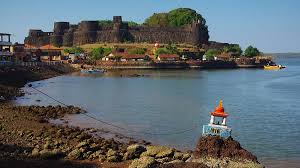
British Invasion and the Fall of Vijaydurg
Vijaydurg continued to stand as a Maratha stronghold until the early 19th century, serving as a key naval base and defensive fortification. However, with the gradual decline of the Maratha Empire, the British saw an opportunity to eliminate one of the last remaining symbols of Maratha maritime dominance. In 1818, the British, determined to crush Maratha resistance, launched an extensive naval and land-based assault on Vijaydurg.
The attack was meticulously planned by the East India Company, which had already defeated most of the Maratha forces in other parts of India. A combined British naval fleet and army advanced towards Vijaydurg, armed with modern artillery and warships superior to the Maratha defenses. The British blockaded the fort from the sea, preventing any reinforcements or supplies from reaching the Marathas inside. Meanwhile, land-based artillery units positioned themselves at strategic points to bombard the fort’s walls relentlessly.
For days, Vijaydurg endured heavy cannon fire, with the fort’s walls and bastions taking severe damage. The Marathas, though vastly outnumbered and outgunned, fought valiantly, defending their stronghold with whatever resources they had left. However, as the siege intensified and provisions ran low, it became increasingly difficult for the defenders to hold their ground. The relentless British onslaught eventually breached the fort’s outer defenses, leading to intense close combat within the fort premises.
Despite their unwavering courage, the Marathas were ultimately overpowered, and Vijaydurg Fort fell to the British in 1818. With this decisive victory, the British East India Company solidified its control over the western coast, effectively bringing an end to Maratha naval supremacy.
After its capture, Vijaydurg remained under British rule, but its military significance gradually diminished over time. The fort, once a bustling naval headquarters, was repurposed as a coastal defense post but was no longer the center of power it once was. With advancements in military technology and changing warfare tactics, Vijaydurg’s role in coastal defense declined, and the fort eventually fell into partial neglect.
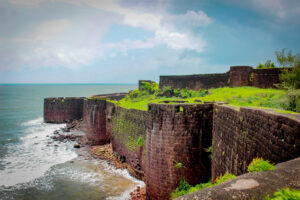
Vijaydurg Fort Today: A Symbol of Maratha Maritime Power
Today, Vijaydurg Fort stands as a monument to the resilience and brilliance of the Maratha Navy. Though centuries have passed since its fall, the fort’s towering walls, massive bastions, and hidden tunnels continue to echo stories of its glorious past. As one of India’s most formidable naval fortresses, Vijaydurg attracts historians, architects, and travelers eager to explore its grand architecture, strategic importance, and maritime legacy.
Visitors can walk through its majestic gates, climb its watchtowers overlooking the Arabian Sea, and witness the remains of the once-mighty naval dockyard where the Maratha fleet was built. The fort remains a testament to the strength, vision, and naval prowess of the Marathas, inspiring generations to learn about its rich heritage. Vijaydurg is more than just a historic site—it is a living legend, standing tall against the tides of time, reminding us of the great Maratha legacy that once ruled the seas.
Architectural Brilliance
Vijaydurg Fort is an architectural marvel that showcases advanced military engineering. Some of its remarkable features include:
- Triple-Layered Fortification: The fort’s defense system consists of three layers of walls, making it extremely difficult for enemies to breach. The walls, built with laterite stone, are known for their immense strength and durability.
- 200-Meter Underwater Wall: One of Vijaydurg’s most astonishing features is its submerged stone wall, extending 200 meters into the sea. This defensive barrier was designed to prevent enemy ships from approaching the fort, making it an innovative naval defense structure of its time. Historians believe that this underwater wall was built to slow down enemy ships, giving the Marathas an advantage in naval battles.
- Massive Bastions and Watchtowers: The fort boasts several towering bastions, offering panoramic views of the Arabian Sea and providing a strong defensive advantage. Each bastion was strategically placed to ensure maximum visibility and protection, allowing soldiers to monitor enemy movements efficiently. Some of the bastions still house old cannons, remnants of the fort’s glorious military past.
- Secret Tunnels and Escape Routes: Vijaydurg Fort is said to have several hidden tunnels, including an underground passage that facilitated secret movement during sieges. These tunnels allowed soldiers to escape in emergencies or move supplies discreetly. Some of these tunnels are still unexplored, adding an air of mystery to the fort’s legacy.
- Kallal Bhandi (Dockyard): Vijaydurg Fort was home to a Maratha naval dockyard, making it one of the few coastal forts that could build and repair warships. The dockyard played a crucial role in the construction of Maratha warships, including the famous Gurabs and Gallivats, which were small, swift vessels that outmaneuvered European ships. This facility highlights the naval ingenuity of the Marathas and their commitment to maritime dominance.
- Well-Planned Water Supply System: The fort had a well-planned water conservation system, including multiple wells, reservoirs, and rainwater harvesting structures. These ensured that the fort had a steady water supply even during prolonged sieges, making it self-sufficient.
- Intricate Carvings and Temples: Within the fort premises, visitors can find ancient temples and inscriptions, reflecting the cultural and religious significance of Vijaydurg Fort. These structures add to the historical depth of the fort, showcasing Maratha artistry and devotion.
- High-Altitude Strategic Positioning: The fort is built at a considerable height above sea level, allowing it to withstand high tides and storms while providing an unparalleled vantage point for spotting enemy ships. The strategic placement of its bastions and gates made it almost impenetrable.
Vijaydurg Fort’s advanced architectural techniques, naval innovations, and military resilience make it one of the most formidable coastal forts in India. Its blend of maritime engineering, defensive strategies, and historical significance continues to captivate historians, architects, and travelers alike.
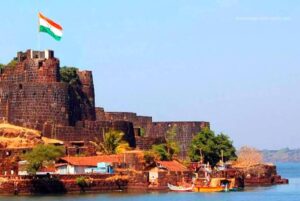
Significance in Maratha Naval Warfare
Vijaydurg Fort was one of the first naval bases in India and played a crucial role in protecting the Konkan coast from European invasions. Under Kanhoji Angre, the fort became a stronghold of the Maratha Navy, which dominated the western coast and challenged European naval supremacy.
- Maratha Naval Power: The Marathas, under Kanhoji Angre’s leadership, successfully defended Vijaydurg Fort against the Portuguese, Dutch, and British navies, making it one of the most secure naval bases of its time. Kanhoji Angre’s fleet operated from here, launching raids on enemy ships and enforcing Maratha control over key trade routes.
- European Resistance: Despite repeated attempts by the British and other European forces to capture Vijaydurg Fort, the fort remained unconquered for decades, standing as a symbol of Maratha naval dominance. The Maratha Navy’s expertise in guerilla warfare at sea was crucial in repelling foreign attacks.
- Strategic Trade Center: Vijaydurg Fort was not just a military outpost but also a major trading hub, facilitating commerce along the Arabian Sea. It served as a safe harbor for ships transporting goods like spices, textiles, and metals, boosting the economy of the Maratha Empire.
- Shipbuilding and Naval Innovation: The fort’s dockyard (Kallal Bhandi) played a vital role in the construction and maintenance of warships, making Vijaydurg Fort one of India’s earliest naval shipbuilding centers. The Marathas developed swift and maneuverable warships that outpaced and outmaneuvered the heavier European vessels.
- Naval Warfare Tactics: The Marathas mastered sea-based guerrilla warfare, using small, fast-moving vessels to attack larger enemy ships. Vijaydurg Fort provided the perfect defensive stronghold for these naval operations, allowing the Marathas to control maritime trade and military movements along the western coast.
Due to its strategic location, strong fortifications, and robust naval infrastructure, Vijaydurg Fort remained one of the most significant naval fortresses of the Maratha Empire. Even today, its ruins and historical artifacts provide a glimpse into the legendary maritime legacy of the Marathas.
Vijaydurg Fort Today: A Tourist’s Delight
Today, Vijaydurg Fort stands as a historical and architectural gem, attracting history buffs, adventure seekers, and nature lovers alike. Visitors can explore its majestic gateways, bastions, and ruins, all of which echo stories of Maratha valor and strategic brilliance. The fort offers breathtaking views of the Arabian Sea, making it a perfect spot for photography, sightseeing, and historical exploration.
For those interested in history, Vijaydurg Fort provides an opportunity to witness the remnants of Maratha naval dominance, including the ancient dockyard and underwater fortifications. The intricate carvings, old cannons, and strategic bastions offer a glimpse into the military prowess of the Marathas.
Adventure enthusiasts can trek through the rugged pathways and steep walls, experiencing the fort’s grand architecture and challenging terrain. The fort’s elevated viewpoints provide mesmerizing panoramic views of the Konkan coastline, making it a favorite among photographers and travel bloggers.
Nature lovers will appreciate the serene environment, surrounded by lush greenery and the vast Arabian Sea. The cool sea breeze, chirping birds, and occasional sightings of dolphins near the coast make Vijaydurg Fort a tranquil retreat away from city life.
Visitors can also enjoy the local Konkani cuisine at eateries near the fort, featuring delicious seafood, Malvani delicacies, and coconut-based dishes.
Vijaydurg Fort is not just a fort; it is an experience that blends history, adventure, and natural beauty, making it a must-visit destination for anyone exploring Maharashtra’s heritage.
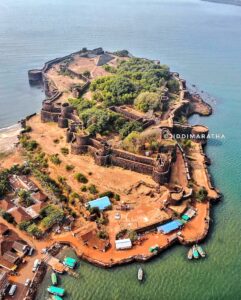
How to Reach Vijaydurg Fort
By Road:
Vijaydurg Fort is well-connected to major cities like Mumbai, Pune, and Goa via NH-66 (Mumbai-Goa Highway). The nearest town is Devgad, about 27 km away, from where local transport options like buses, taxis, and auto-rickshaws are available.
- From Mumbai: Approx. 440 km, around 9-10 hours drive via NH-66.
- From Pune: Approx. 380 km, around 7-8 hours drive via NH-48 and NH-66.
- From Goa: Approx. 180 km, around 4-5 hours drive via NH-66.
State transport buses frequently run from Mumbai, Pune, and Kolhapur to Devgad, Malvan, and Kankavli, from where you can hire local transport to reach the fort.
By Rail:
The closest railway station is Kankavli (57 km away), which is well-connected with Mumbai, Pune, and Goa.
- From Mumbai: Several Konkan Railway trains like Matsyagandha Express, Netravati Express, and Konkan Kanya Express connect Mumbai to Kankavli.
- From Pune: Trains such as Goa Express and Pune-Ernakulam Superfast Express connect Pune to Kankavli.
- From Kankavli Railway Station, you can take a bus or taxi to Vijaydurg Fort.
Other nearby railway stations include Rajapur Road (42 km) and Sindhudurg (80 km).
By Air:
The nearest airport is Goa’s Dabolim Airport (180 km away), which is well-connected with domestic and international flights. Another convenient option is Kolhapur Airport (130 km away), which has flights from Mumbai, Pune, and Bangalore.
- From Goa Airport, you can hire a cab or take a bus to Vijaydurg Fort.
- From Kolhapur Airport, buses and taxis are available for Vijaydurg Fort.
- A third option is Ratnagiri Airport (120 km away), which has limited flights but is closer.
Best Time to Visit
The best time to visit Vijaydurg Fort is from October to March, when the weather is pleasant, cool, and ideal for sightseeing and exploration. The temperature during this period ranges from 15°C to 30°C, providing comfortable conditions for visitors to walk around the fort and enjoy the scenic beauty of the Konkan coast.
The monsoon season (June to September) transforms Vijaydurg Fort into a lush green paradise, enhancing its beauty with fresh greenery and misty surroundings. However, heavy rains and high humidity may make trekking within the fort slightly difficult, as the pathways can become slippery. While the monsoon is not the most recommended season for exploration, it is perfect for those who enjoy nature and the mesmerizing sight of rain-washed landscapes.
Summer months (April to May) tend to be hot and humid, with temperatures soaring above 35°C, making it less favorable for outdoor activities. However, if you plan to visit during this time, early morning or late evening hours would be the best to avoid the peak heat.
For the best experience, winter (November to February) is highly recommended as it provides the most comfortable weather conditions, allowing you to explore the fort extensively and soak in the breathtaking views of the Arabian Sea without discomfort.
Conclusion
Vijaydurg Fort is not just a historical monument; it is a symbol of Maratha bravery, strategic military planning, and maritime dominance. This magnificent fort stands as a reminder of India’s rich naval history, showcasing the brilliance of Chhatrapati Shivaji Maharaj’s military vision and the resilience of Kanhoji Angre’s naval supremacy. The fort’s triple-layered walls, underwater stone barriers, massive bastions, and hidden escape tunnels speak volumes about the advanced defensive strategies of the Marathas.
A visit to Vijaydurg Fort offers a chance to relive history while being surrounded by breathtaking coastal landscapes. As you walk through its grand entrance, explore its majestic gateways, and stand atop its watchtowers overlooking the Arabian Sea, you can almost hear the distant echoes of clashing swords, roaring cannons, and triumphant war cries that once defined this formidable fortress. Each stone in Vijaydurg Fort has a story to tell—of strategic battles, unwavering resistance, and Maratha naval brilliance.
Beyond its military significance, Vijaydurg Fort also presents a cultural and architectural spectacle, offering insights into the engineering expertise of the Marathas. Its well-planned water conservation system, hidden tunnels, and naval dockyard demonstrate the self-sufficiency and preparedness of its past rulers. Unlike many other forts that have crumbled over time, Vijaydurg Fort continues to stand strong, a testament to superior craftsmanship and meticulous planning.
Whether you are a history enthusiast, an architecture admirer, a photographer, or an adventure traveler, Vijaydurg Fort promises an experience that is both educational and exhilarating. It is more than just a relic of the past—it is a living symbol of Maharashtra’s glorious legacy.
A trip to Vijaydurg Fort is not just about exploring a historic site; it’s about connecting with the spirit of Maratha valor and experiencing the grandeur of an empire that once ruled the seas. The fort’s vast expanse, surrounded by the azure waters of the Arabian Sea, provides an unforgettable journey into the heart of India’s naval heritage. If you are planning a trip to Maharashtra’s Konkan region, Vijaydurg Fort should undoubtedly be at the top of your list.
Step into history, embrace the warrior spirit of the Marathas, and immerse yourself in the timeless grandeur of Vijaydurg Fort—a fortress that continues to inspire generations with its unwavering strength and legendary past.

Vijaydurg Fort Map
Follow More Fort





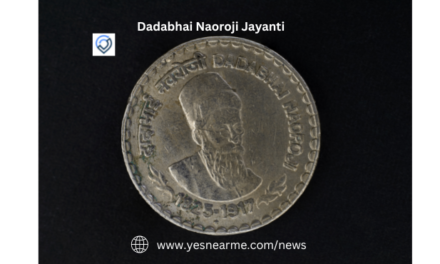

Recent Comments